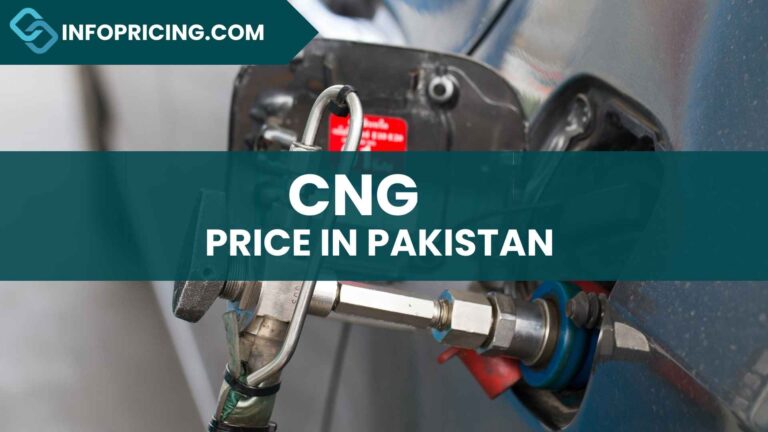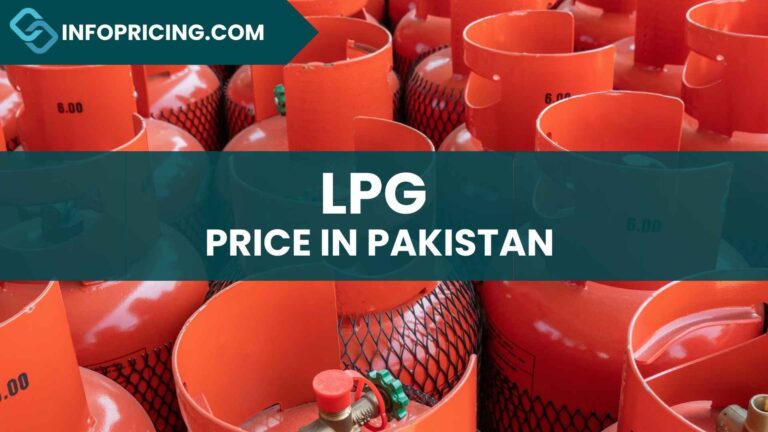Petrol Price in Pakistan 2025
Knowing the current petrol price in Pakistan is key for managing your daily costs. The price of petrol in Pakistan today, is a big worry for many. With prices always changing, it’s vital to have the latest info to make good choices.
Whether you’re driving to work or running a business, knowing the petrol price helps you budget better. It can also help you save money.

Petroleum Prices in Pakistan Today
| Petroleum Type | Old Price | New Price | Difference |
|---|---|---|---|
| Petrol | PKR 256.13 | PKR 255.63 | -0.50 |
| High Speed Diesel (HSD) | PKR 263.95 | PKR 258.64 | -5.31 |
| Light Diesel Oil (LDO) | PKR 161.06 | PKR 155.81 | -5.25 |
| Kerosene Oil | PKR 174.06 | PKR 171.65 | -3.20 |
It’s very important to keep up with petrol prices in Pakistan. Fuel costs are going up, and understanding the market is crucial. By staying informed, you can use fuel wisely and cut down on costs.
In this article, we’ll share the latest on petrol prices in Pakistan. We’ll cover the current price and what affects it.
Key Takeaways
- Staying informed about the current petrol price in Pakistan is essential for managing daily expenses.
- The petrol price in Pakistan today 2024 is a significant concern for individuals and businesses.
- Fluctuations in petrol prices in Pakistan can impact budget planning and cost reduction.
- Knowing the current petrol price in Pakistan can help individuals and businesses make informed decisions.
- Staying up-to-date with the latest market trends and prices is crucial for reducing fuel expenses.
Current Petrol Price in Pakistan
To keep up with the today petrol price in pakistan, it’s key to check updates often. The pakistan petrol price today changes due to taxes and global trends. Many are worried about the petrol price and the rising diesel price in pakistan.
The taxes set by the government greatly affect the petrol price in Pakistan. These taxes can raise the cost of petrol and diesel. Knowing about the government taxation structure helps people and businesses plan better.
Here are some important points about the current petrol price in pakistan:
- The petrol price changes with global trends and crude oil price swings.
- The diesel price in pakistan is also shaped by taxes and rules from the government.
- Keeping up with the today petrol price in pakistan helps with fuel planning and budgeting.
Understanding what affects the pakistan petrol price today helps in making smart fuel choices. It’s vital to stay informed about the petrol price to manage fuel costs in Pakistan’s changing market.
Regional Price Variations Across Pakistan
The price of petrol in Lahore is different from other parts of Pakistan. This is because of things like how much it costs to transport fuel and taxes. For example, diesel is more expensive in places far from refineries.
Several factors cause these price differences. Here are a few:
- Transportation costs: Places near ports and refineries pay less for petrol.
- Taxes: Each region has its own tax rules, which change petrol and diesel prices.
- Demand and supply: Where demand is high and supply is low, petrol prices go up.
Knowing these factors helps people make better choices about buying fuel. By looking at the petrol price in Lahore and diesel prices across Pakistan, they can budget better.
Also, remember that diesel petrol prices often change. So, it’s important to keep an eye on the latest prices to save money.
Understanding Fuel Pricing in Major Cities
Pakistan’s fuel prices have been a hot topic lately. The petrol price in pakistan today decrease is good news for everyone. This drop in prices is seen in big cities like Lahore, Karachi, and Islamabad. It’s important to know what affects pakistan fuel prices.
Many things influence fuel prices in these cities. Government taxes, transportation costs, and global trends play a big role. In Lahore, lower government taxes led to the petrol price decrease. Karachi’s close location to the port also keeps its pakistan fuel prices lower.
Here are some key points to consider when analyzing fuel prices in major cities:
- The petrol price in pakistan today decrease has been observed in all major cities, with Lahore and Karachi experiencing the most significant reductions.
- The pakistan fuel prices are expected to remain stable in the coming months, with some fluctuations due to global market trends.
- Consumers can benefit from the petrol price decrease by planning their fuel purchases and taking advantage of the lower prices.
In Islamabad, the pakistan fuel prices are influenced by the city’s location and the presence of government offices. The petrol price decrease in Islamabad is due to its efficient transportation system and many fuel stations.
Factors Influencing Pakistan’s Fuel Prices
Petroleum prices in Pakistan are shaped by global and local factors. The current gasoline rates are influenced by global market trends. Changes in crude oil prices directly affect the cost of petrol in PK. Government policies and taxation also play a big role in setting fuel prices.
Some key factors that affect petroleum prices in Pakistan include:
- Global demand and supply of crude oil
- Geopolitical events and their impact on oil-producing countries
- Government taxation and subsidy policies
- Local demand for fuel and transportation costs
Understanding these factors helps consumers make better fuel usage decisions. By keeping up with current gasoline rates in Pakistan, individuals and businesses can manage their fuel expenses. This way, they can plan for the future more effectively.
The relationship between these factors is complex. Their effect on fuel prices changes over time. However, by considering these influences, consumers can understand the forces behind petroleum prices in Pakistan. This knowledge helps them make more informed decisions about their energy usage.
Historical Price Trends and Analysis
To grasp the current fuel prices in Pakistan, we must look at past trends. The gas prices in pakistan have changed a lot over time. This change is due to global events, government policies, and seasonal demand. By studying these trends, we can understand what affects fuel rates pakistan and make smart choices.
The data on latest petrol price in pakistan shows a big increase in prices over ten years. This rise is because of global oil price changes, currency shifts, and government taxes. Here are some important points:
- Year-over-year comparison: The gas prices in pakistan have gone up by about 10% each year for the last five years.
- Seasonal price patterns: The fuel rates pakistan are usually higher in summer because of more demand.
- Impact of global events: The latest petrol price in pakistan changes with global events like oil price swings, economic sanctions, and political tensions.
Knowing these historical trends helps us make better choices about fuel use and budgeting. It also lets us predict and get ready for price changes.
Price Comparison Between Different Fuel Types
In Pakistan, people often compare fuel prices. The cost of petroleum in Karachi is different from diesel in Lahore. Knowing why these prices vary is key.
The type of fuel affects its price. Petrol, diesel, and gasoline have unique qualities. For example, diesel in Lahore is pricier because many vehicles use it. On the other hand, Karachi’s lower petroleum cost is due to its oil refineries.
Here’s a comparison of fuel prices in major cities:
- Petrol: Rs 255 per liter (average)
- Diesel: Rs 258 per liter (average)
- Gasoline: Rs 255 per liter (average)
Knowing these price differences helps save money. By looking at today’s fuel rates and what your vehicle needs, you can cut costs. Whether it’s petrol, diesel, or gasoline, staying updated on prices can help your budget.

How to Track Petrol Prices Effectively
Keeping up with the latest petrol prices is key to managing fuel costs. In Pakistan, petrol prices in Islamabad and other cities change often. To stay in the loop, people can use official price notification systems. These systems send regular updates on fuel prices.
Mobile apps and online tools are great for tracking petrol prices. They give users real-time updates, helping them make smart fuel choices. Also, PSO price updates are available, keeping users informed about fuel prices.
Here are some ways to track petrol prices:
- Visit official government websites for updates
- Use mobile apps that track fuel prices
- Sign up for newsletters or alerts from fuel companies
By using these methods, people can stay current with petrol price updates. This helps them make better fuel choices. It also helps reduce fuel costs and deal with price changes.
Impact of Fuel Prices on Transportation Costs
The current petrol prices in Pakistan have a big impact on how much it costs to move around. This affects everyone, from people who use cars to businesses and the whole economy. Fuel price update is key because it changes how much it costs to run vehicles. With petrol being a big part of moving costs, any price changes can have big effects.
Things that add to moving costs include fuel prices, keeping vehicles in good shape, and paying for labor. The current petrol prices in Pakistan are very important for fuel costs. These costs can be a big part of moving expenses. So, when fuel prices go up, moving costs go up too, hurting the economy.
To lessen the effect of fuel prices on moving costs, it’s important to keep up with fuel price updates. You can do this by finding better routes, using less fuel, and looking at other ways to move. By doing these things, people and businesses can lower their moving costs and stay ahead in the market.
In short, fuel prices greatly affect moving costs, impacting everyone from drivers to businesses and the economy. By knowing what adds to moving costs and keeping an eye on current petrol prices in Pakistan, we can all take steps to reduce the impact of fuel prices. This helps us stay competitive in the market.
Government Policies and Price Regulation
The government of Pakistan has a big role in setting gasoline rates in Pakistan. They want to keep prices stable and affordable for everyone. The Oil and Gas Regulatory Authority (OGRA) is in charge of this. They make sure prices are fair and don’t get too high.
OGRA also gives out petrol price forecast. This helps people and businesses plan for the future. It’s important for making smart choices.
Some things that affect fuel pricing policies include:
- Global market trends
- Domestic demand and supply
- Taxation and revenue generation
- Subsidy programs for low-income households
OGRA works with the government to make policies that help everyone. They aim to grow the economy and help people. By controlling gasoline rates in Pakistan and giving accurate petrol price forecast, they want to make things better for all.

In short, the government’s rules and regulations help keep petrol price today low and stable. They also help the energy sector grow in Pakistan.
Tips for Fuel Cost Management
Managing fuel costs is key in today’s economy, with pakistan petrol rates changing often. To cut down on fuel costs, keep your vehicle in top shape. This includes regular oil changes and tire rotations. Also, planning your routes and combining trips can lower fuel use.
It’s important to stay updated on the current petrol price in pakistan. You can find the latest prices on websites or mobile apps. This way, you can decide the best time to fill up and budget your fuel better. For example, if you’re in Lahore, check the petrol price in lahore to plan your fuel buys.
Here are some tips to manage your fuel costs:
- Drive smoothly and maintain a consistent speed to reduce fuel consumption
- Avoid idling for extended periods, as this can waste fuel
- Remove extra weight from your vehicle to improve fuel efficiency
- Consider using fuel-efficient vehicles or alternative modes of transportation
By following these tips and keeping up with fuel prices, you can manage your fuel costs well. Always check the current petrol price in pakistan and plan your fuel buys wisely. This way, you’ll save money in the long run.
Future Price Predictions and Market Analysis
The petrol price in Karachi and Islamabad is expected to change with global trends. It’s important for consumers to understand these trends. The future of fuel prices in Pakistan is uncertain, with many factors at play.
Experts say global events will impact short-term prices. This includes changes in oil prices and geopolitical tensions. The petrol price trend is likely to stay volatile, with prices possibly going up. In the long run, prices might stabilize as the government tries to control them.
Several factors will shape fuel pricing in Pakistan:
- Global oil prices
- Government policies and regulations
- Geopolitical tensions
- Supply and demand
The petrol price trend will keep influencing Pakistan’s fuel market. As fuel demand grows, the government must find ways to keep prices stable. With the right policies, Pakistan can handle the challenges of the global fuel market.
Conclusion
Exploring current petrol prices in Pakistan shows how important it is to stay updated. The changing fuel costs and rules affect Pakistan’s economy a lot.
Government actions and global markets influence today’s petrol prices. It’s key for Pakistanis to watch their fuel spending closely. Using official price alerts and apps helps make smart choices for travel budgets.
The future of petrol prices in Pakistan is hard to predict. This makes it crucial to keep an eye on changes and adjust plans. By doing this, people and businesses can handle the fuel market better and make wise decisions.
FAQ
What is the current petrol price in Pakistan?
Petrol prices in Pakistan change based on where you are and the type of fuel. Check our website or official government channels for the latest prices.
How do petrol prices differ across different regions in Pakistan?
Prices vary due to transport costs, demand, and government policies. Our detailed analysis section has more on this.
What factors influence the price of petrol in Pakistan?
Prices are affected by global trends, government policies, demand, and taxes. Our article dives into these factors to explain fuel pricing in Pakistan.
How can I stay up-to-date on the latest petrol price changes in Pakistan?
Use official notifications, mobile apps, and online tools to stay informed. We’ve got a guide on tracking petrol prices in Pakistan.
How do petrol prices impact transportation costs in Pakistan?
Price changes affect both personal and business transport costs. Our article looks at how fuel prices impact transport costs in Pakistan.
What is the government’s role in regulating petrol prices in Pakistan?
The government, through OGRA, sets and regulates prices. Our article covers their policies, taxes, and subsidies that shape fuel prices.
What strategies can I use to manage my fuel costs in Pakistan?
Reduce consumption, improve vehicle efficiency, and use price changes to your advantage. Our article offers tips to cut fuel expenses.
What is the future outlook for petrol prices in Pakistan?
Future prices depend on global trends, policies, and demand. Our analysis provides insights into short and long-term forecasts.


